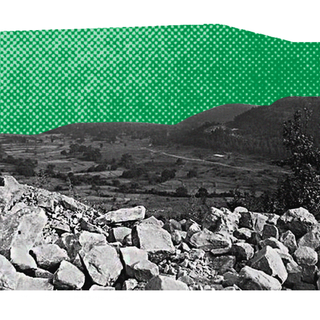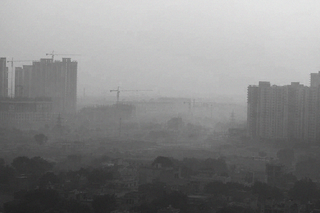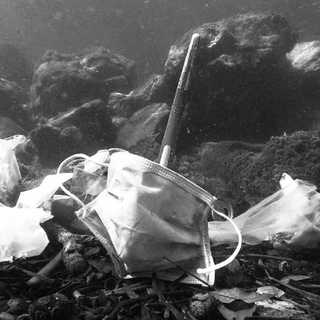
Smog in Delhi Leads to Pandemic‑Like Lockdown for a Week
The government has shut schools and offices, advising residents to stay indoors and minimize their exposure.

Schools in Delhi have been shut down for a week. Government officials have been asked to work from home, and private offices have also been advised to switch to the WFH-model for, at least, a week. Why? Due to the looming health crisis posed — not by a new variant of novel coronavirus — but by human-made air pollution.
The threat is so huge that in addition to suspending schools and shutting down offices — things we’ve begun to associate with the pandemic-induced lockdown — residents of the city have also been advised to “limit outdoor activities and minimize their exposure.”
Forbes reported that the concentration of fine particulates in the Delhi air is 20 times the World Health Organization’s recommended daily maximum. “You’ve opened up all schools. You’re now witnessing all kids going to school and exposing their lungs to pollution… Little children are out on the streets at 7 [a.m.] in the morning… It can’t happen,” Justice D.Y. Chandrachud noted on Saturday during a hearing on the alarming levels of air pollution in the national capital.
Crop burning, or stubble burning — which involves setting fire to fields to remove crop residue from previous harvests besides talking weeds and pests — is considered among the biggest contributors to air pollution in the national capital. Researchers estimate that each year, farmers burn about 23 million tonnes of paddy stubble in India to get their fields ready in time to plant wheat crops. In fact, a report from earlier this year found that India leads the world in crop-burning emissions.
Related on The Swaddle:
Severe Menstrual Cramps Linked to Air‑Pollution Exposure: Study
This November, according to satellite data, the number of farm fires has been the highest in the past four years. In early October, a report by India Today had anticipated a rise in crop burning since the weather this year had delayed paddy harvesting by a week in Punjab and Haryana — leaving farmers with lesser time to prepare their field for wheat crops.
However, the contribution of crop burning to Delhi’s rising air pollution levels, however large, is still one of the many reasons behind the problem and isn’t single-handedly responsible for the unfolding health crisis. So, when Solicitor General Tushar Mehta told the court “Punjab needs to buckle up and do something” to deal with it, CJI Ramana’s response was, “You’re projecting as if farmers alone are responsible. But that is 40%. Where are the steps to ensure Delhi people are controlled? What about firecrackers? Vehicle pollution?”
With Diwali having ended a couple of weeks ago, firecrackers aren’t an immediate threat — at least, not for another year. In the meantime, the Delhi government is attempting to address the pollution caused by vehicles by seizing “old diesel and petrol vehicles” and “checking vehicles for valid PUC (or, ‘Pollution Under Control’) certificates,” according to a senior Delhi Traffic Police officer.
At the moment, the Supreme Court of India is engaged in a hearing to come up with ways to deal with the health crisis. As per the latest reports, the CJI has termed industry, transport, road dust, and partly, the practice of stubble burning as the “major culprits” behind the pollution. The Delhi government has said it is prepared to impose a complete lockdown on the national capital to tackle the crisis, just as the court has suggested on Saturday.
Related on The Swaddle:
Air Pollution Linked to Severe Mental Distress, Even Hospitalization: Study
Alongside the “blame game,” the impact of Delhi’s air pollution on people’s health continues. Reports suggest hospitals in the capital are dealing with a sharp rise in patients complaining of breathing difficulties. “We are getting 12-14 patients daily in the emergency, mostly at night, when the symptoms cause disturbed sleep and panic,” Dr. Suranjit Chatterjee from Apollo Hospitals said in a statement.
According to a September 2021 study, air pollution has impaired healthy lung function in one out of every three children in Delhi. That just seems like the tip of the iceberg when you learn how, globally, India also reports the most number of infant deaths due to air pollution, and how 9% of all deaths of children below the age of five in the country in 2017 can be attributed to air pollution.
Even when it’s not deadly, it is detrimental to children’s health. Research suggests it can lead to anemia among children under the age of five years, and also lead them to experience challenges with inhibitory control, that is, the ability to exercise self-control over temptations and impulsive behavior. Also, pregnant women breathing in fine particles of pollution can negatively affect the IQ of the children they give birth to. Further, Katherine Walker, principal scientist at the Health Effects Institute in the U.S., had told The Guardian last year that “[T]here is something going on [with air pollution] that is causing reductions in baby growth and ultimately birth weight.”
“It is high time that the air pollution issue in Delhi and other cities [are] settled in a systematic manner to save the future of our children,” Dr. Arvind Kumar, co-author of the study on impaired lung function in Delhi’s children, and founder trustee of the Lung Care Foundation in the city, had said. The present crisis has only made Dr. Kumar’s words ring truer.
Devrupa Rakshit is an Associate Editor at The Swaddle. She is a lawyer by education, a poet by accident, a painter by shaukh, and autistic by birth. You can find her on Instagram @devruparakshit.
Related


Water Detected in Ancient Galaxy From the Early Universe
